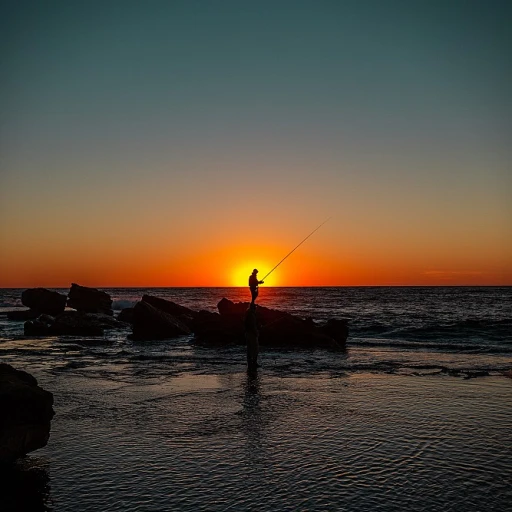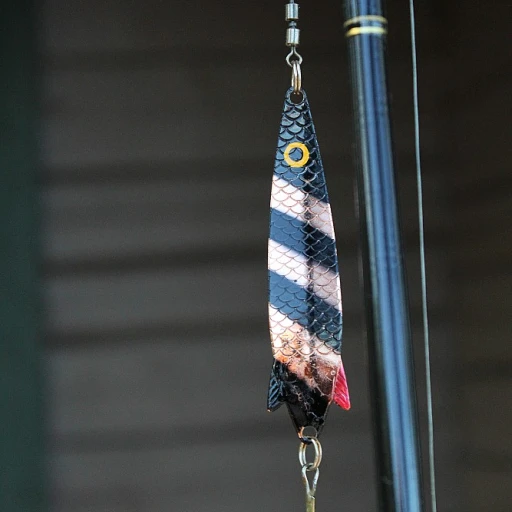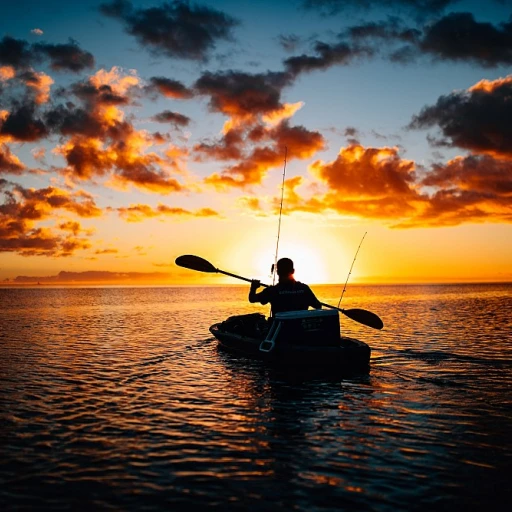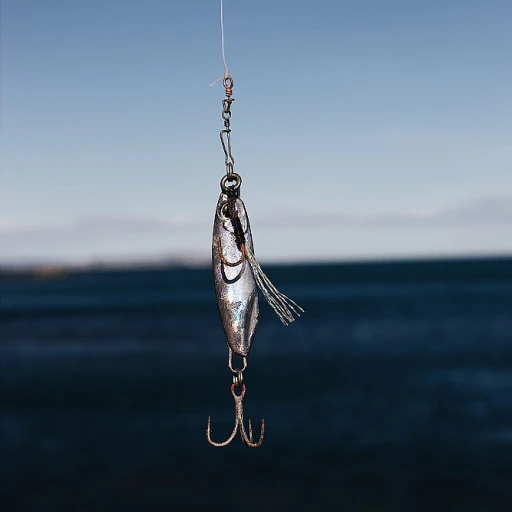
The biggest bluefin tuna ever caught
An epic battle in the waters of Nova Scotia
In the icy waters of Nova Scotia, the story of the biggest bluefin tuna ever caught begins. On October 26, 1979, a man named Ken Fraser set out for what would be a record-breaking fishing trip. Using tackle that was deemed nearly insufficient for such a behemoth, Fraser revealed not only the tenacity but also the skill inherent in big game fishing.
Weighing it out: the record-smashing fish
The bluefin tuna that Fraser caught tipped the scales at an astonishing 1,496 pounds (678 kg). Yes, you read that right, nearly one and a half thousand pounds. This mammoth fish was over 12 feet long and required both wit and muscle power to reel in. At the time, no one could believe that such a massive tuna could be caught with a rod and reel.
Details about the mammoth catch
Fraser's gear was outfitted with a 130-pound test line, a wise choice given the ultimate size of the fish. The reel spooled pounds, steadily drawing in 14+ inches with every crank, an endeavor that lasted over 45 minutes. Boats nearby could do nothing but watch in amazement as Fraser's battle with the monstrous tuna unfolded.
The official recognition
The catch didn't just shock the nearby fishing community, but it made waves globally. This bluefin soon found its place in the International Game Fish Association (IGFA) records, cementing Fraser’s name in the annals of sport fishing history.
How the bluefin made history
Fraser's legendary catch remains unchallenged to this day, holding the title of the heaviest Atlantic bluefin tuna caught on rod and reel. It wasn't just about the numbers but also about the remarkable story of skill, luck, and sheer determination. This legendary event continues to inspire countless anglers and sport fishing enthusiasts around the globe.
Ken Fraser’s lasting legacy
Ken Fraser’s world record tuna catch set the benchmark for future generations. The story is often recounted at fishing communities around Nova Scotia and beyond. Over time, Fraser's achievement became more than a record; it became an emblem of what is possible in the sport fishing world.
Stay tuned as we dive deeper into more legendary catches, record-breaking yellowfin tuna, and the gear that makes it all possible in the upcoming parts of this fascinating journey of world record tuna catches.
Ken Fraser's legendary catch
{ result: "Ken Fraser's legendary catch
In the world of sport fishing, the name Ken Fraser resonates with a mix of awe and admiration. Back in 1979, Fraser achieved an unparalleled feat: he caught a bluefin tuna that weighed a staggering 1,496 pounds. This catch off where Hosted by Nova Scotia, confirmed by the International Game Fish Association (IGFA), still holds the world record for the largest bluefin tuna ever caught.
Award-winning moment
Ken Fraser wasn't just using any ordinary equipment. He successfully hooked the colossal fish using a heavy-duty rod and reel, demonstrating remarkable skill and endurance. According to various experts in the fishing community, achieving such a moment requires profound knowledge and experience with the right tackle world.
The epic battle
The epic battle between Fraser and the massive bluefin lasted approximately 45 minutes. Some might argue that this kind of contest is the epitome of sport fishing, where patience, strength, and expertise come into play. The fish was eventually subdued using a combination of techniques, showcasing the sheer tenacity and skill of both the angler and the equipment. In many ways, Fraser's event epitomizes the essence of sport fishing.
Legacy and inspiration
Since Ken Fraser’s remarkable feat, many avid fishers across the globe have aspired to break his record. However, no one has come close to passing the 1,496 pounds mark. Fraser's accomplishment continues to inspire new generations of tuna fishers, fueling their ambitions to one day set new records in the waters of Scotia, Gulf of Mexico, or wherever the big game fish might be found.
You can read more about this incredible feat and others in our comprehensive dive into the biggest bluefin tuna ever caught.
Yellowfin tuna records: giants of the deep
Giants of the deep
Tuna fishing is a thrilling adventure, especially when it comes to catching yellowfin tuna. These giants of the deep are well-known for their formidable size and vigorous fighting spirit. A magnificent yellowfin tuna weighing 388 pounds was caught off the coast of Cabo San Lucas, Mexico. This impressive catch highlights the sheer power and speed these fish possess.
In 1977, a different enormous yellowfin tuna, weighing 388 pounds, was reeled in by angler Curt Wiesenhutter, setting a benchmark in the sport fishing world. This catch holds the record yellowfin status for over 40 years, cementing its legendary status. Wiesenhutter's skill and determination showcase the perseverance needed to catch such an enormous game fish.
Tackle world record
The International Game Fish Association (IGFA) is crucial in maintaining these impressive records. Their stringent guidelines ensure that each record is reputable and recognized globally. Beating a world record yellowfin tuna is no small feat, as anglers need the right gear and plenty of patience.
Modern-day fishermen benefit from advanced tackle and techniques. Brands like Shimano improve the overall tuna fishing experience, making it more accessible to sport fishing enthusiasts. Whether chasing record yellowfin or other game fish, today's fishermen owe much to the evolution in tackle technology.
A global pursuit
Yellowfin tuna are found in warm, pelagic waters across the globe. From the Gulf of Mexico to Panama's Pinas Bay, these fish provide incredible sport fishing opportunities. Anglers flock to famous locations like Prince Edward Island, known for its bountiful waters and record-breaking potential.
Fishing for yellowfin tuna isn't just about the catch; it’s about the entire experience. The thrill of pitting one's skill against these powerful fish, the camaraderie of fellow anglers, and the chance to make history by breaking records—all of these make yellowfin tuna fishing a popular pursuit.
While controversies and challenges in record verification persist, what's undeniable is the sheer excitement and passion surrounding tuna fishing. The combination of human tenacity and awe-inspiring marine life creates an unforgettable sport fishing adventure.
To read more about remarkable catch stories, check out biggest fish in the world caught: record-breaking giants of the deep.
The gear that made history: tackle and techniques
Legendary reels and rods
When it comes to landing those colossal tuna, anglers can't just rely on luck. The core of catching a world record tuna lies in the quality and endurance of the tackle. Rods and reels play a critical role in the retrieval of these ocean giants. Advanced fishing technology has significantly contributed to achieving what was previously thought to be impossible.
Reels that withstand the test
High-quality reels, like those from Shimano and Penn International, are famous in the world of sport fishing. Robust builds and smooth drag systems are a must. Remember that Ken Fraser’s legendary catch? The reel spooled with heavy-duty line was as instrumental as his patience and strength. Line capacity and resistance to saltwater corrosion are important factors that make or break a fishing expedition.
Rods designed for giants
Strong, flexible, and resilient—these are the characteristics you want in a rod for tuna fishing. Brands such as Calstar and St. Croix have built names in the industry by producing rods that can handle the immense pressure of reeling in a bluefin tuna or a yellowfin. Having the right rod can prevent breakage during those intense battles under the scorching sun and relentless waves.
Case studies and angler experiences
Case studies reveal fascinating instances where the right gear made all the difference. Eric Samson's achievement off the coast of Nova Scotia with a 600-pound bluefin tuna emphasized the role of specialized tackle. Using an 80-pound test line on a top-notch reel ensured that he had the leverage and control to tire the fish without snapping the line.
The role of technology and innovation
Fishing tackle innovations have streamlined the art of catching world record fishes. Electronic line counters and braided lines provide higher strength per diameter, thus allowing more line on the reel. These technological advancements have opened doors to new possibilities in sport fishing, making it ever more exciting for anglers worldwide.
Choosing the right gear
Selecting the appropriate gear isn't just about direct technical specifications. It's about understanding the marine environment you are venturing into, the specific type of tuna you are targeting, and your personal fishing technique. Always opt for gear that has been proven, and don’t hesitate to learn from the experts and their legendary records.
The role of the International Game Fish Association (IGFA)
Setting the gold standard in sport fishing
The International Game Fish Association (IGFA) plays a pivotal role in the world of sport fishing records, ensuring that the records are fairly documented and celebrated across the globe. Founded in 1939, the IGFA is the ultimate authority on angling records, responsible for maintaining the integrity of sports fishing achievements and offering a comprehensive database for anglers worldwide.How records are verified
Accuracy and authenticity are what the IGFA is all about. When an angler claims a world record tuna catch, the IGFA steps in to verify the details meticulously. The verification process includes weighing the fish on certified scales, checking the tackle used to ensure compliance with IGFA regulations, and thoroughly inspecting the angler's line, hook, and overall gear. This rigorous scrutiny guarantees that each record is legitimate and meets the high standards set by the association.IGFA's impact on tuna records
In the world of fishing, the IGFA's role cannot be overstated. Iconic records, such as Ken Fraser's legendary 1,496-pound bluefin tuna caught off Nova Scotia, are ratified by the IGFA, making them not only memorable but also credible. The association maintains detailed records of notable catches, including the infamous 427-pound yellowfin tuna caught by Guy Yocom off the coast of Cabo San Lucas, Mexico in 2012, marking yet another monumental milestone in the sport.Contributions toward conservation
Beyond certifying records, the IGFA also leads the charge in marine conservation. Recognizing the delicate balance of ecosystems and the importance of sustainable fishing practices, the IGFA supports a variety of initiatives aimed at protecting marine life, including tuna. Their guidelines encourage catch and release practices and the use of environmentally friendly gear and techniques, ensuring the sport of fishing remains a viable recreational activity for future generations.A community driven by excellence
The IGFA brings together a global community of sport fishing enthusiasts, fostering a shared sense of camaraderie and a passion for the sport. Their annual world records and awards ceremonies provide a platform to celebrate outstanding achievements, inspire budding anglers, and promote excellence in the sport. This commitment to upholding the highest standards in angling ensures that the legacy of legendary catches, like those of Ken Fraser and Guy Yocom, continues to inspire.Source: IGFA Official Website
Famous fishing locations for record tuna catches
Prince edward island: the mecca of bluefin tuna fishing
Prince Edward Island (PEI) in Canada is undeniably one of the most renowned locations for record-breaking tuna fishing. Every year, anglers from around the globe flock to PEI in hopes of landing a monster bluefin. The cold, nutrient-rich waters of the Gulf of St. Lawrence provide the perfect habitat for these giant fish.
PEI has produced numerous record catches, including the legendary 1,496-pound bluefin tuna caught by Ken Fraser in 1979. This remains the world record bluefin tuna and continues to draw fishermen to the island in pursuit of their own fishing stories.
Cabo san lucas: a yellowfin paradise
Cabo San Lucas, Mexico, is another premier destination for record tuna fishing, especially for yellowfin tuna. The warm Pacific waters here are teeming with life, making it an ideal fishing spot. The largest yellowfin tuna ever caught, weighing in at 427 pounds, was landed off the coast of Cabo San Lucas by angler Guy Yocom in 2012. This record yellowfin tuna catch highlights Cabo’s potential as a top sport fishing haven.
Aside from the thrill of catching record-breaking fish, the vibrant local culture and stunning landscapes make fishing trips to Cabo an unforgettable experience. You're not just fishing; you're part of a larger adventure.
Panama: blackfin and bluefin hotspots
Pinas Bay in Panama is famed for its blackfin tuna waters. While blackfin tuna may not grow as large as their bluefin and yellowfin cousins, they offer a unique challenge for sport fishermen. The record blackfin tuna, weighing 46 pounds, was caught off the coast of Pinas Bay, cementing Panama’s reputation as a destination for all types of tuna.
Panama is also famous for its bluefin tuna fishing, with the rich waters of the Pacific and Caribbean providing ample opportunities for anglers to reel in colossal catches. The blend of tropical climate, pristine waters, and abundant marine life makes Panama an irresistible draw for tuna enthusiasts.
Nova scotia: a bluefin haven
Nova Scotia, particularly the waters off Cape Breton Island, is another top-tier location for pursuing record bluefin tuna. The massive bluefin caught here is testament to the region’s rich marine biodiversity. Anglers often recount tales of their time in Nova Scotia, where the fish battles are as legendary as the scenery is breathtaking.
Fishing in Nova Scotia isn't just about breaking records; it's an experience steeped in rich history and tradition. The local fishing community is deeply passionate, and their knowledge of the waters is invaluable for anyone looking to catch a behemoth bluefin.
Challenges and controversies
Catch verification and maintaining records can be a contentious topic. The International Game Fish Association (IGFA) plays a crucial role in validating these records to ensure fairness and accuracy. However, disputes sometimes arise over measurements, documentation, and capture methods.
Despite the challenges, the allure of setting a new world record pound remains undiminished. Anglers continue to push the boundaries, driven by the thrill of the chase and the hope of etching their names into fishing history.
Gearing up for the future
With evolving techniques and equipment, the future of tuna fishing looks promising. Innovations from companies like Shimano and the commitment of the sport fishing community suggest that we may see even bigger catches in the coming years. Eager anglers are always on the lookout for the next tackle world record, improving gear, and honing their skills to rewrite the history books.
Whether fishing in the waters of Nova Scotia, Panama, or Cabo San Lucas, the excitement and passion for tuna fishing remain as strong as ever. These locations will continue to be at the heart of record-breaking endeavors, inspiring generations of anglers to come.
Controversies and challenges in record verification
Contention in angler circles
When it comes to record-breaking catches, you're bound to find a few ruffled feathers. The IGFA, the body that validates these records, has faced its fair share of disputes and controversies. A prime example revolves around Ken Fraser's legendary catch way back in the ‘70s off Nova Scotia. Some segments of the fishing community, over the years, have questioned the exact weight and methodology, despite Fraser's overwhelming evidence and the IGFA's validation.
Disputed claims and hearsay
Another bone of contention is the discrepancy between different fishing bodies’ rules and the switching of categories. For instance, there have been tales and whispers around certain Pacific bluefin tuna catches. Anglers from different corners, like California and New South Wales, often contest the true global rank of their catches. Let’s not even get started on the heated debates around the Gulf of Mexico’s tuna waters.
Verification challenges
Verifying a record in our digital era should be straightforward, but often, it's a tangled mess. Factors such as the type of fishing gear used, the exact location, and the specific method of capture can spark disagreements. Legal concerns can also arise around protected waters, like those near Prince Edward Island, or whether the fish was caught during legitimate sport fishing events.
Photos and videos: Friend or foe?
Modern-day records often hinge on photographic and video evidence. Enter technology: While most anglers see it as a boon, others argue it can be manipulated. A classic instance was when a sport fishing claim involving a mammoth yellowfin tuna near Cabo San Lucas in Mexico was invalidated due to questionable video clarity, despite the angler’s vehement claims.
The human factor
Occasionally, it’s the humans, not the fish, that stir the pot. Rivalries brew, much like the one involving famed anglers like John E. Richardson and Eric Samson, often overshadowing the actual records. This human drama, ironically, brings more attention to tuna fishing but can muddy the waters — pun intended — of record verification.
Looking ahead
In all the disputes and controversies, one thing's for sure: The pursuit of record tuna catches will always keep adrenaline high and spirits competitive. As anglers push boundaries and the IGFA refines its verification processes, future disputes will undoubtedly arise, fueled by the constant thirst to be the best in the sport. Ready for the thrill?

-large-full.webp)


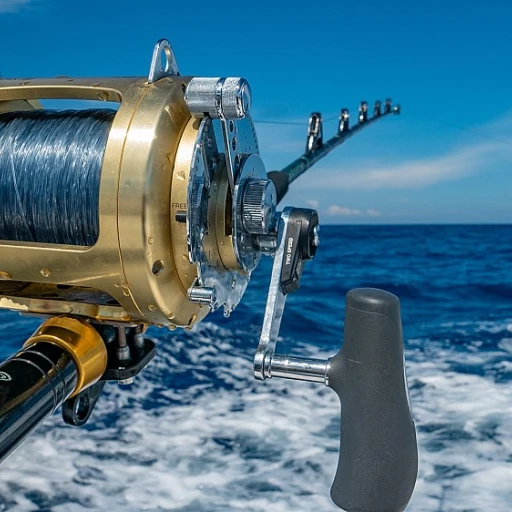
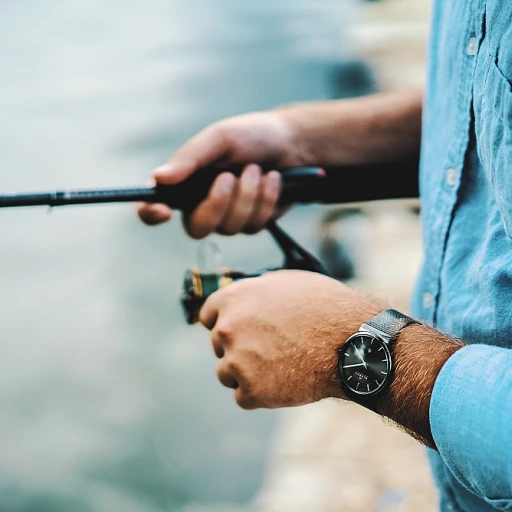
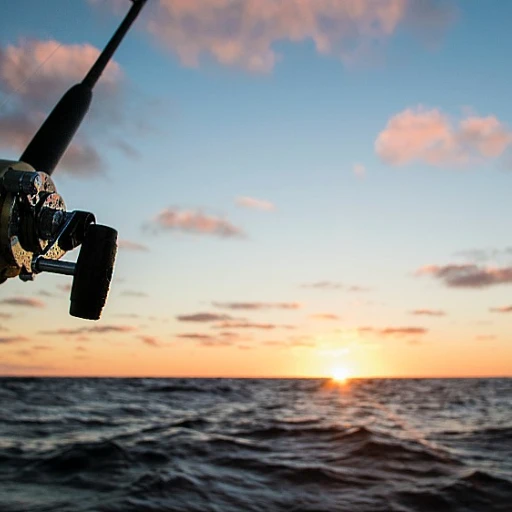

-large-teaser.webp)
